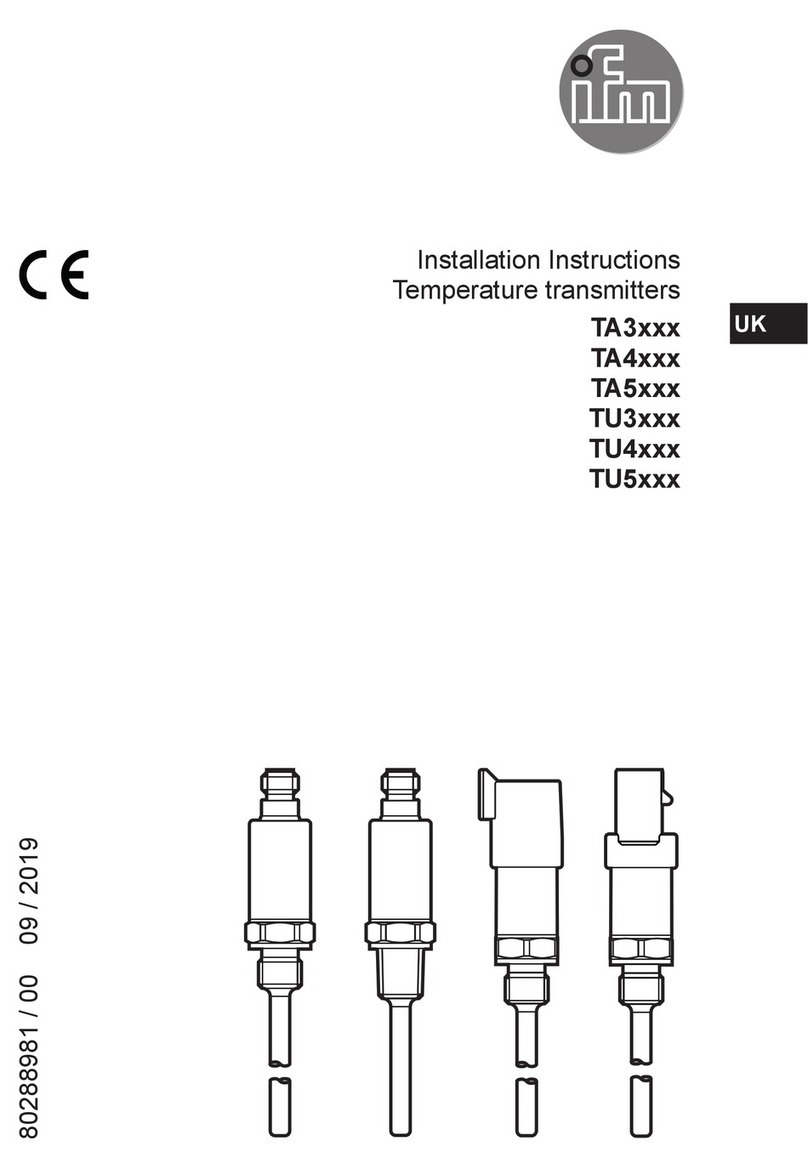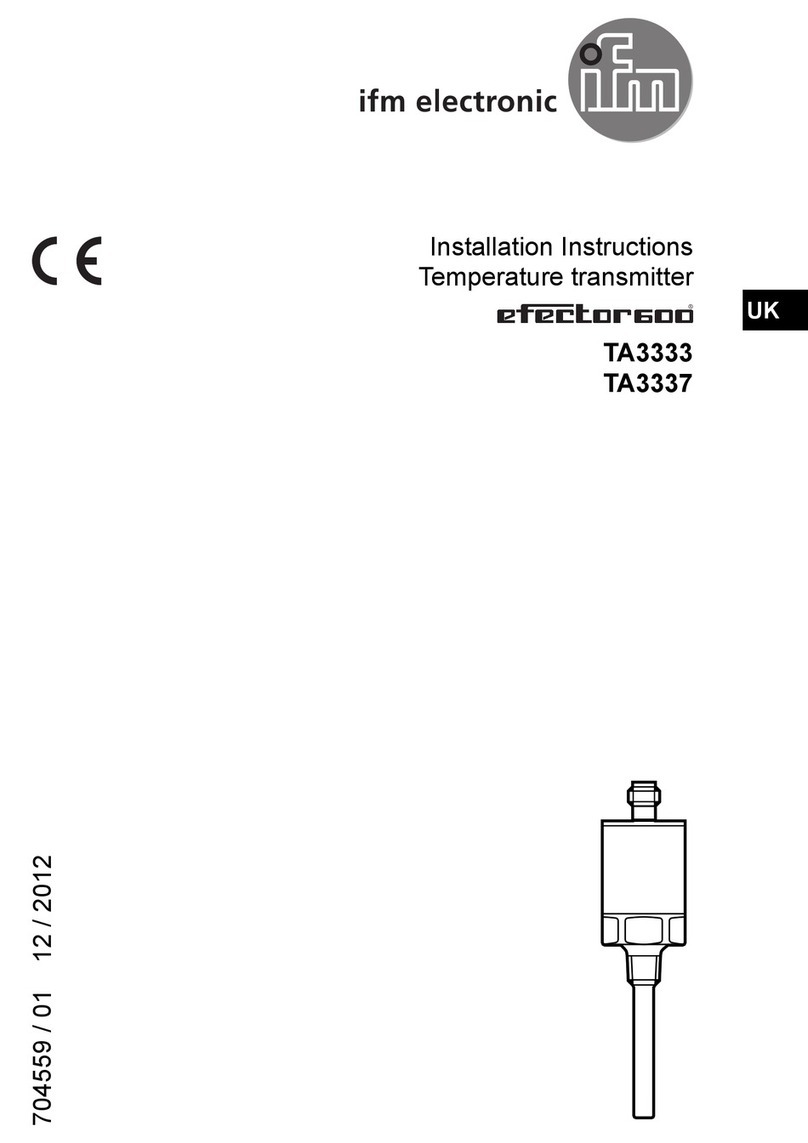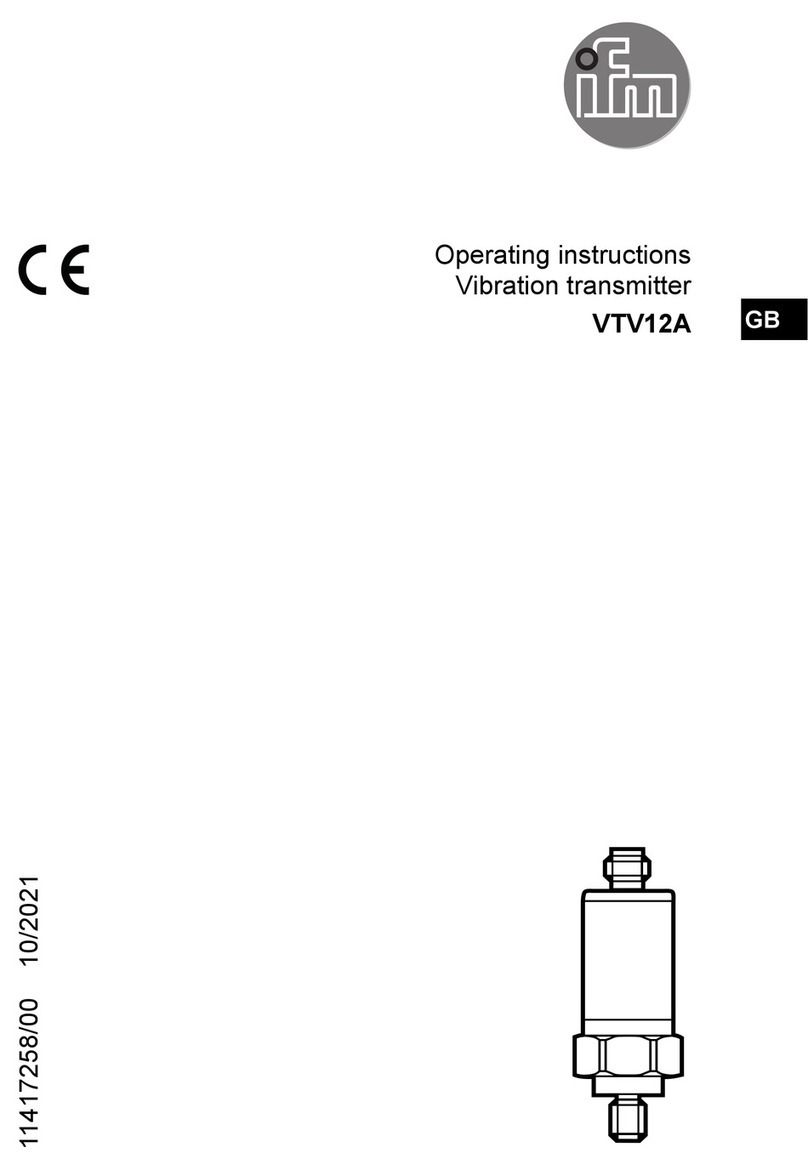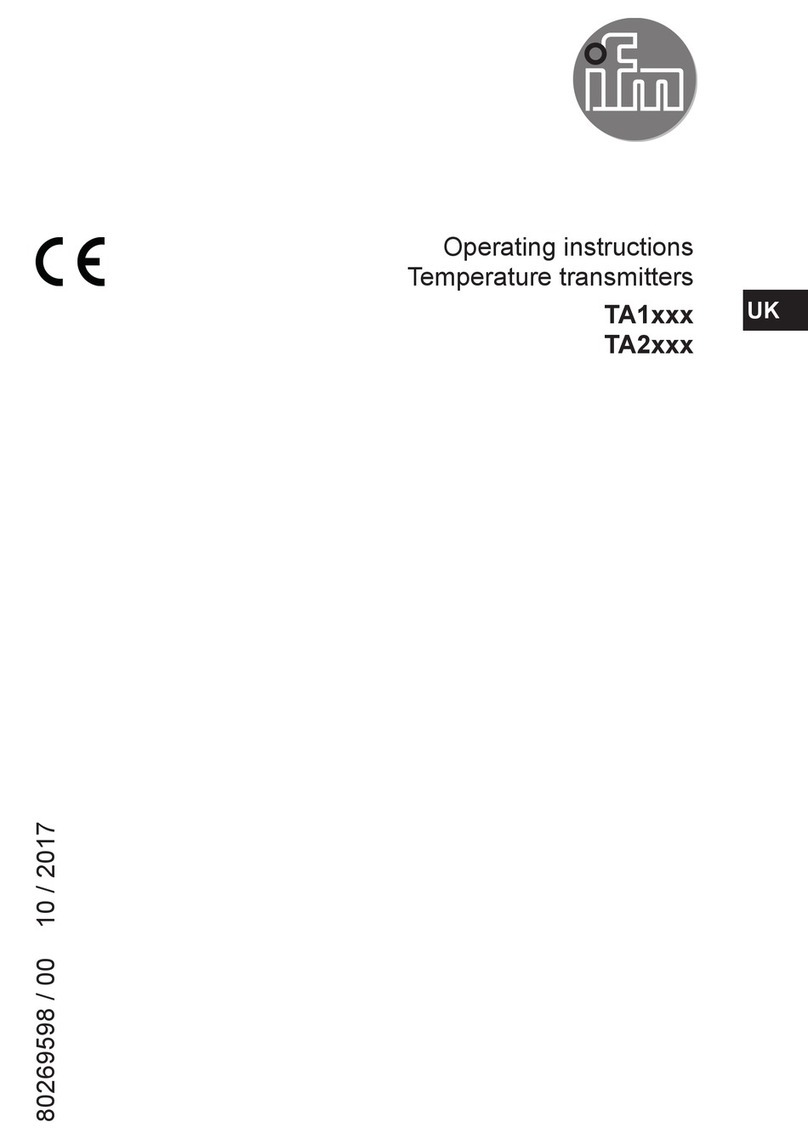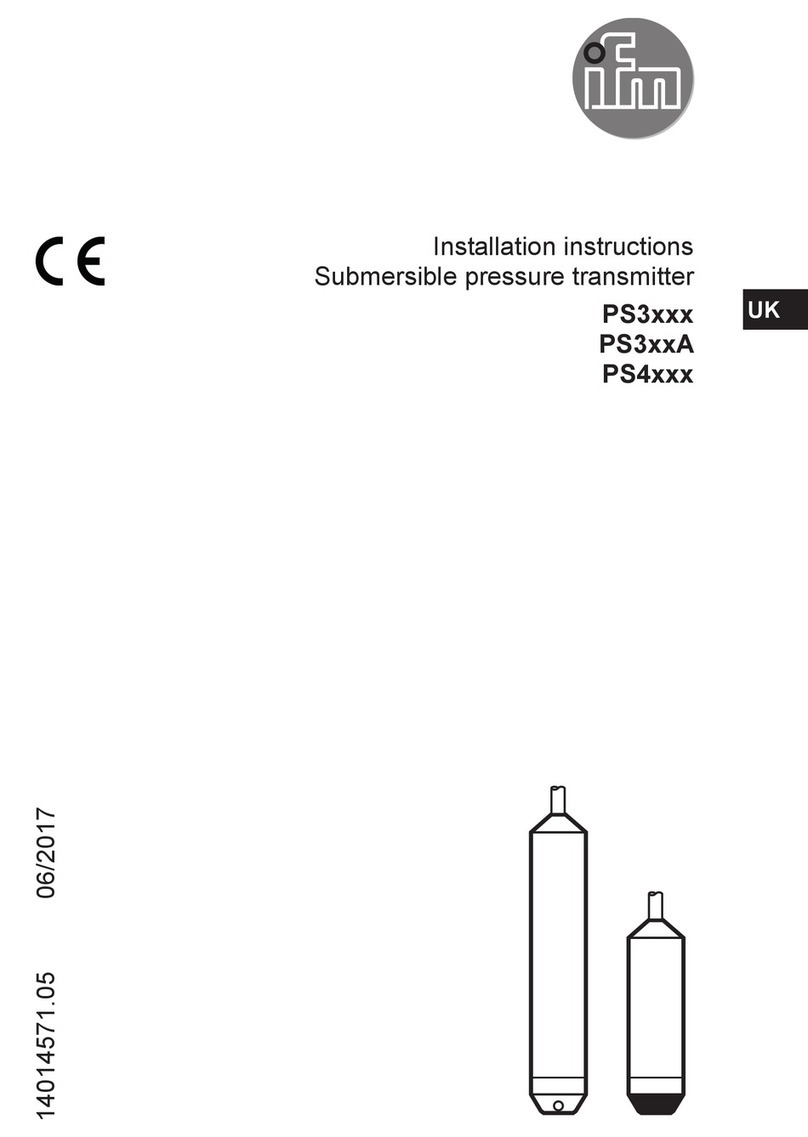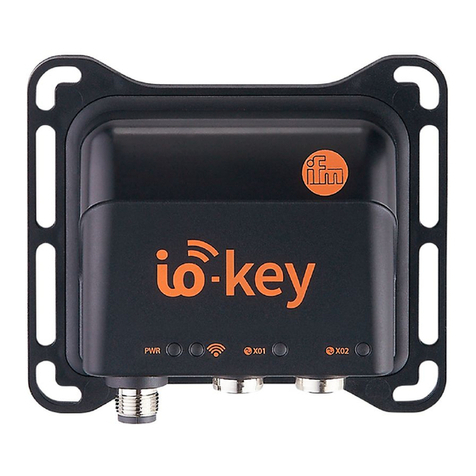
4
4 Function
• The unit provides a temperature-proportional output signal (4���20 mA or
20...4mA).
• The measuring range is scalable�
• In addition to the analogue signal the unit provides a diagnostic signal� Sensi-
tivity and reaction to different error modes can be programmed� Pin 4 = output
fordiagnosticsignal(pnpornpn).
4.1 Monitoring and diagnostic functions
• By measuring with two different, thermically coupled sensor elements (NTC,
Pt1000)theunitautomaticallydetectsdriftsanderrorsduringtemperature
measurement with great reliability�
• If one of the two sensor elements fails, the temperature measurement can be
continuedwiththesecondelement(backupfunction).
• Very long-term stable measurement is achieved by using high-quality sensor
elements�
4.1.1 Drift / fault monitoring
To monitor the drift the unit compares the temperatures of two different sensor ele-
ments that are thermically coupled in the sensor tip� Normally these temperatures
are identical�
Due to the usual manufacturing tolerances a temperature difference of max� 0�1 K
can also occur with new sensor elements� This does not affect the drift monitoring
function�
If there is a drift in one or both sensor elements, the unit detects them due to the
difference between the two measured temperatures� It compares the difference
withthesetwarning/alarmthresholds(drW,drA→7Parametersetting).Ifthe
thresholds are exceeded, it generates corresponding diagnostic messages and
sets the corresponding status for the process value�
In case of high temperature changes in the measured medium (e�g� filling of a
hotmediumintoacoldvessel)theremaybeashort-termdifferencebetweenthe
temperatures of both measuring elements� This is based on the corresponding
specific response dynamics of the measuring elements� To prevent a drift warning
or alarm in these cases, a delay time can be set by means of the parameter ddr�






